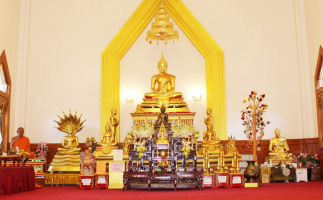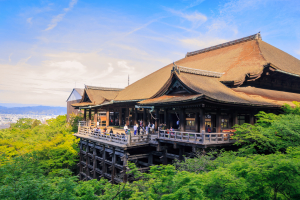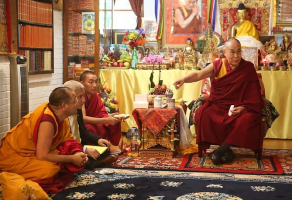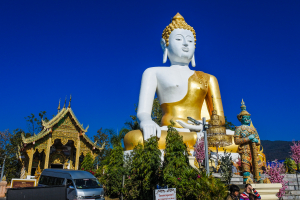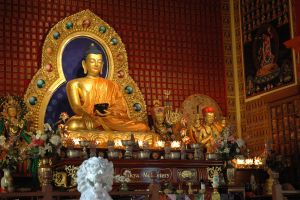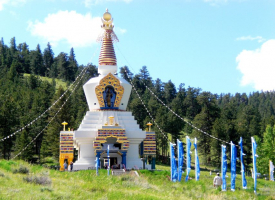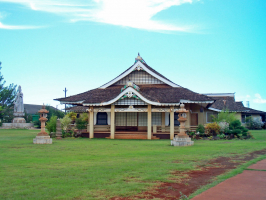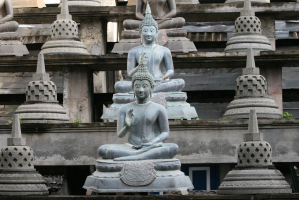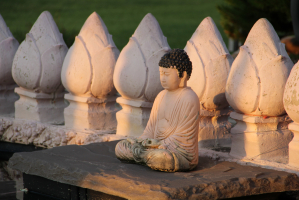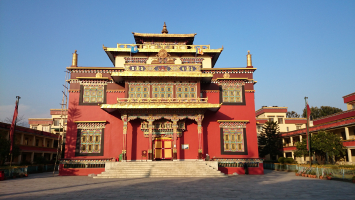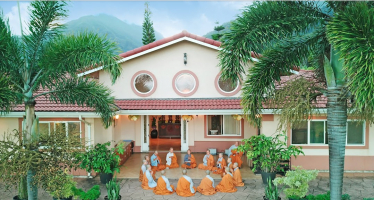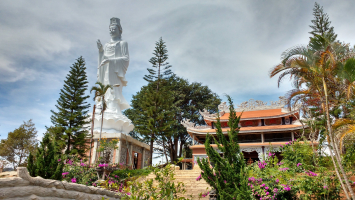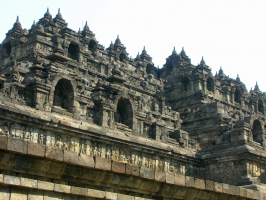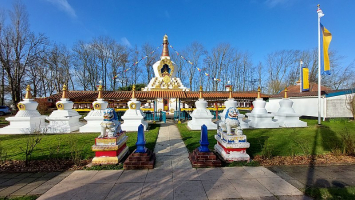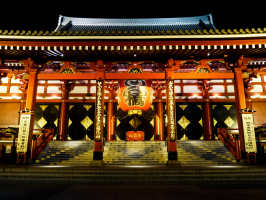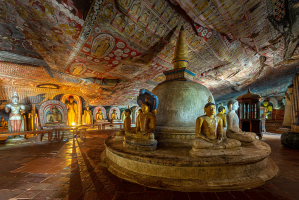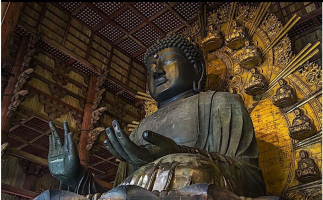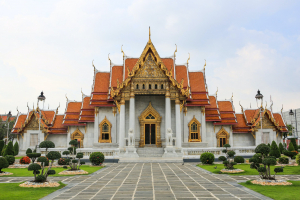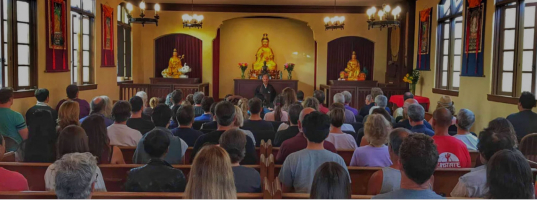Top 7 Best Buddhist Temples in Tibet
Tibet is a land of majestic landscapes and profound spiritual heritage. Tibet is renowned for its breathtaking scenery and its rich Buddhist culture. ... read more...Throughout the region, ancient monasteries and temples stand as a testament to the enduring spiritual legacy that has flourished in Tibet for centuries. In this article, we will journey to discover the best Buddhist temples in Tibet.
-
Jokhang Temple was built during the reign of King Songtsen Gampo in the 7th century. The king's Nepalese and Chinese wives, Princess Bhrikuti and Princess Wencheng, respectively. It played a crucial role in the temple's construction. It is believed that they brought significant Buddhist artifacts and statues to Tibet.
The temple's location was strategically chosen to counteract the demoness' influence believed to have been obstructing the spread of Buddhism in Tibet. The construction of Jokhang marked a pivotal moment in Tibetan history. It signifies the establishment of Buddhism as a dominant spiritual force in the region.
Jokhang Temple showcases a unique blend of Indian, Nepalese, and Tang Dynasty architectural styles. It makes it a masterpiece of Tibetan religious architecture. The central hall is adorned with a golden roof and features intricately carved wooden beams and vibrant murals that depict Buddhist teachings.
The temple's exterior is equally captivating, with its whitewashed walls and golden spires that glisten under the Tibetan sun. The rooftop offers panoramic views of the surrounding landscape, providing visitors tranquility amid the bustling city.
Jokhang Temple is a focal point for pilgrims from all corners of the Tibetan plateau and beyond. The Barkhor Square, the bustling market surrounding the temple, buzzes with pilgrims and tourists alike. Devotees can be seen walking the kora, a circumambulation route around the temple, spinning prayer wheels, and chanting mantras as they make their way around the sacred site.
Phone: +86 891 633 6858
Address: Barkhor Street, Chengguan District, Lhasa, Tibet, China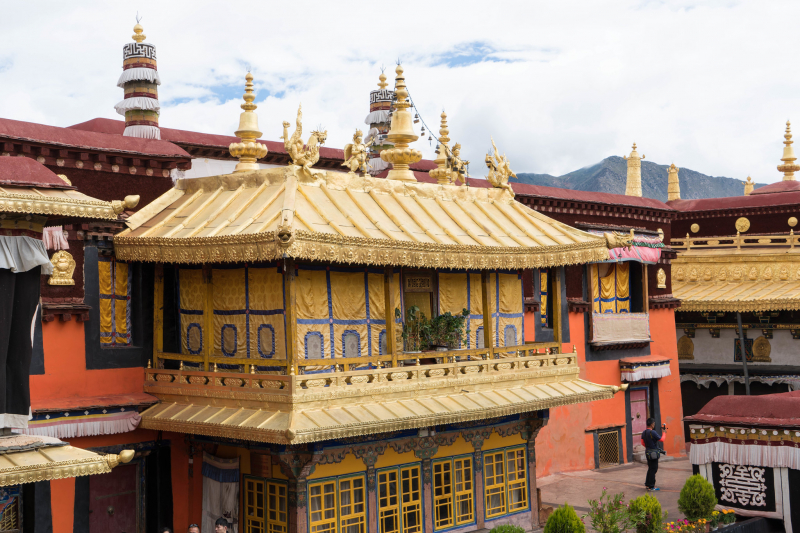
Photo on Flickr: https://www.flickr.com/photos/58757274@N05/33641887660/ 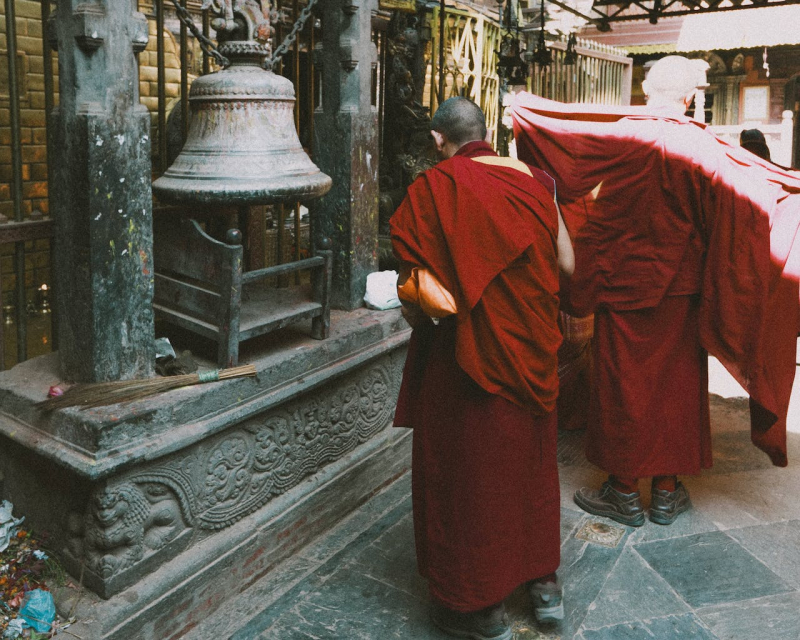
Photo by Mehmet Turgut Kirkgoz : https://www.pexels.com/vi-vn/anh/dan-ong-d-ng-chuong-ton-giao-19381040/ -
The architecture of Rongbuk Monastery is a blend of traditional Tibetan design and practical adaptation to the challenging Himalayan environment. The main hall is adorned with colorful murals and prayer flags. The exterior of the monastery reflects the resilience of Tibetan architectural traditions against the harsh mountain climate.
Rongbuk Monastery has become a focal point for trekkers and mountaineers embarking on journeys to conquer Mount Everest. The monastery marks the starting point for the classic trek to Everest Base Camp. This temple is a trek that offers adventurers not only the thrill of reaching the foot of the world's highest peak but also the chance to immerse themselves in the spiritual ambiance of Rongbuk.
The proximity of Rongbuk Monastery to Everest Base Camp makes it a unique destination for those seeking a harmonious blend of adventure and spirituality. As trekkers make their way through the challenging terrain, they are greeted by the sight of Rongbuk against the backdrop of Everest's towering summit, a visual symphony that transcends the physical and spiritual realms.
The harsh climate and remote location pose significant challenges to the preservation of Rongbuk Monastery. Over the years, the monastery has undergone restoration efforts to safeguard its cultural and religious heritage. Preservation initiatives aim not only to maintain the structural integrity of the buildings but also to protect the unique artworks and scriptures housed within them.
Rongbuk Monastery comes alive during various Tibetan festivals, with monks engaging in colorful ceremonies and rituals. The Saga Dawa Festival, celebrating the birth, enlightenment, and death of Buddha, is particularly significant. Pilgrims from far and wide gather to circumambulate the monastery, spinning prayer wheels and chanting mantras, creating an atmosphere charged with spiritual fervor.
Address: 6R6J+P3H, Tingri County, Shigatse, Tibet, China
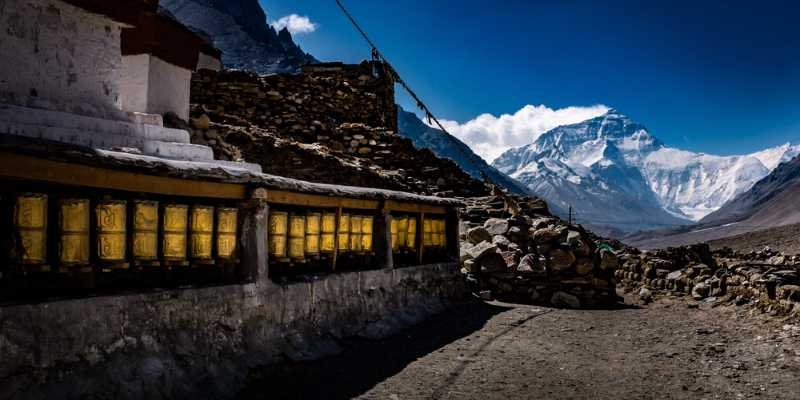
Photo on Flickr: https://www.flickr.com/photos/mondo79/50892131941/ 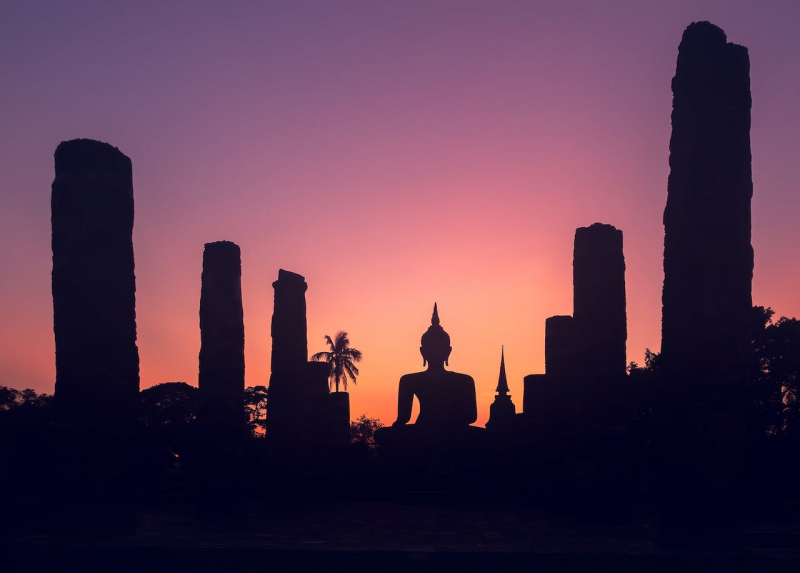
Photo by Valeriy Ryasnyanskiy: https://www.pexels.com/vi-vn/anh/b-u-tr-i-hoang-hon-hung-vi-tren-b-c-t-ng-ph-t-l-n-3840191/ -
Sera Monastery stands as a captivating testament to the rich tapestry of Tibetan Buddhism. Sera Monastery is renowned for its vibrant monastic debates, spiritual teachings, and cultural significance. Sera Monastery has a storied history that dates back over six centuries. It was originally built as a tranquil retreat, providing monks with a serene environment for meditation and study.
The architecture of Sera Monastery reflects traditional Tibetan design principles. The buildings are adorned with intricate murals, thangkas, and sculptures, creating an atmosphere of spiritual reverence. One of the most distinctive features of Sera Monastery is its daily debates. It is a practice integral to the Gelugpa tradition.
Monks engage in rigorous philosophical discussions, questioning and defending their understanding of Buddhist scriptures. The debates attract visitors from around the world who marvel at the intellectual rigor and lively exchanges. Sera Monastery is a hub for various spiritual practices. Monks diligently engage in prayers, rituals, and ceremonies throughout the day.
Sera Monastery houses a wealth of cultural and religious artifacts. Its chapels are adorned with exquisite murals depicting Buddhist deities, historical events, and intricate mandalas. The monastic library preserves ancient manuscripts, texts, and scriptures, contributing to the preservation of Tibetan Buddhist knowledge. Sera has faced challenges over the years, including political upheavals and natural disasters.
Visitors can witness the monks' disciplined lifestyle, explore the chapels adorned with colorful murals, and participate in the enriching cultural exchanges. Sera Monastery stands as a cornerstone of Tibetan Buddhism. Sera Monastery is a living testament to the enduring spirit of Tibetan culture and religion.
Phone: +86 891 633 6858
Address: Lhasa, Tibet, China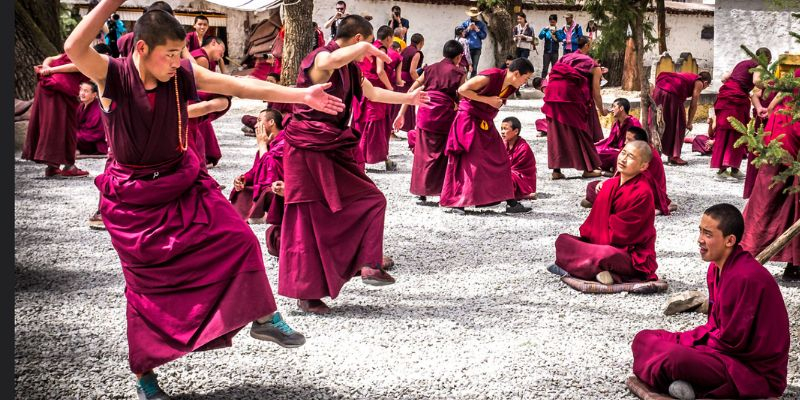
Photo on Flickr: https://www.flickr.com/photos/mondo79/30923361251/ 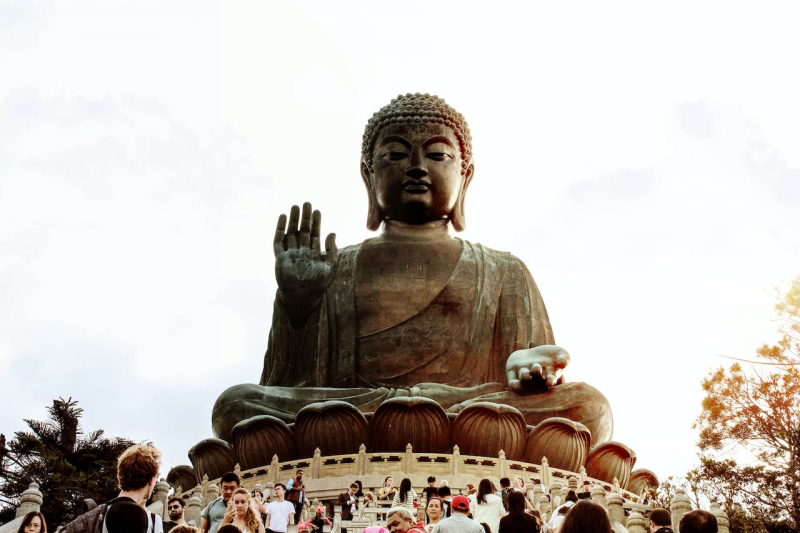
Photo by fania yang: https://www.pexels.com/vi-vn/anh/t-ng-ph-t-2684749/ -
Baiju Temple emerges as a hidden gem. This temple invites travelers to experience a profound journey into spirituality and history. While it may not be as widely known as some famous temples, Baiju Temple holds its unique charm and significance. Baiju Temple boasts a rich history that intertwines with the cultural evolution of the region.
The temple has stood witness to centuries of change and offers a glimpse into the spiritual practices and beliefs that have shaped the lives of the local community. One of the defining features of Baiju Temple is its architectural splendor. The main prayer hall, pagodas, and surrounding structures reflect the craftsmanship of artisans who dedicated their skills to creating a place of divine beauty.
Baiju Temple is situated in a serene natural setting, creating an atmosphere of tranquility that enhances the spiritual experience for visitors. The temple grounds offer a respite from the hustle and bustle of daily life, encouraging contemplation and introspection. Baiju Temple plays a crucial part in preserving and promoting local culture.
The temple becomes a living canvas for cultural expression and storytelling. Baiju Temple serves as a focal point for various spiritual practices. Daily rituals, prayer ceremonies, and meditation sessions create a rhythmic cadence that resonates throughout the temple complex.
The temple's calendar is marked by a series of unique rituals and festivals, each carrying its significance.
Phone: +86 892 817 2105
Address: Gyantse County, Shigatse, Tibet, China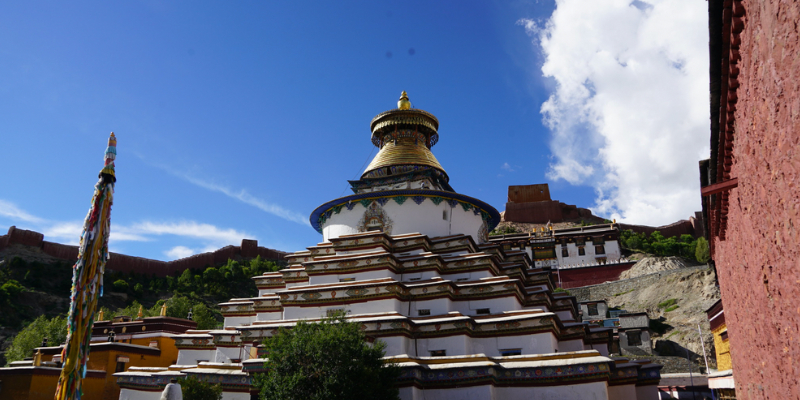
Photo on Flickr: https://www.flickr.com/photos/29868194@N08/49438903632/ 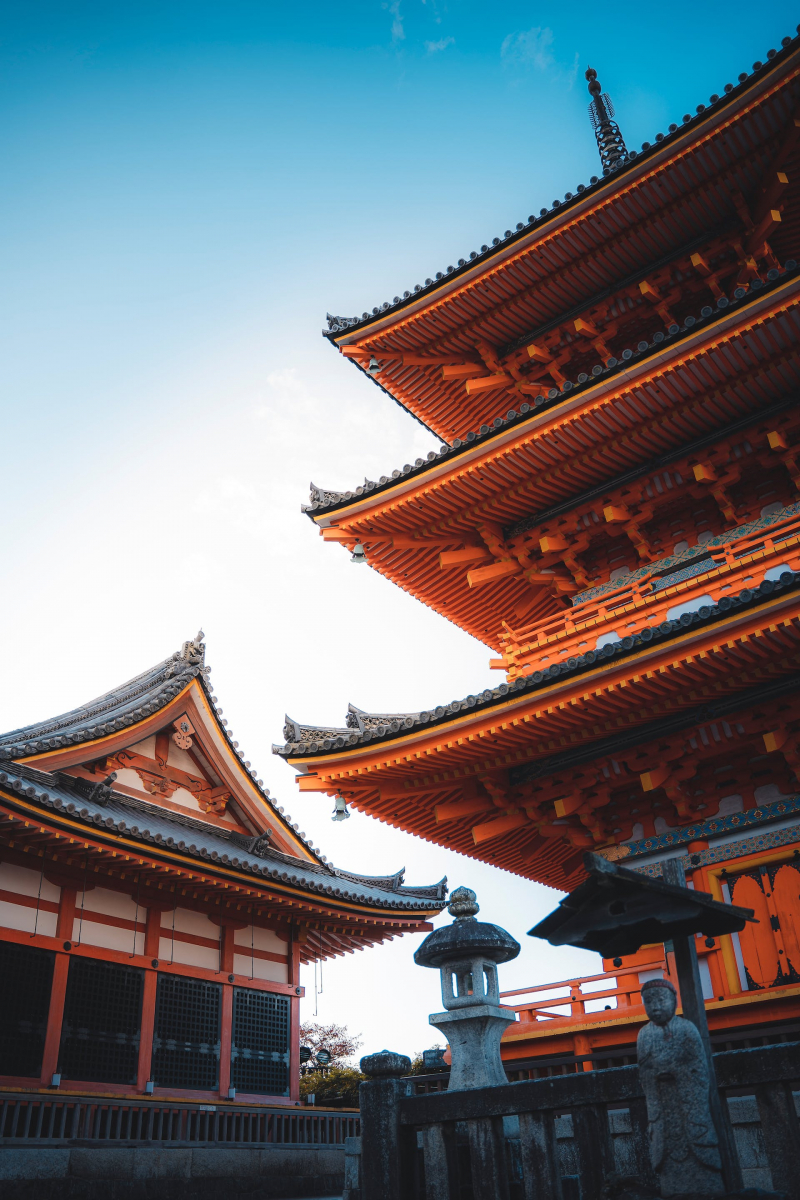
Photo by Willian Justen de Vasconcellos: https://www.pexels.com/vi-vn/anh/m-c-mai-nha-l-ch-s-nh-t-b-n-15830264/ -
Meru Monastery stands as a beacon of spiritual serenity and cultural richness. This monastery holds a unique place in the tapestry of Tibetan Buddhism. It offers a tranquil space for both pilgrims and seekers of cultural and spiritual enlightenment. The monastery has witnessed the ebb and flow of Tibetan history. It serves as a sanctuary for monks and pilgrims seeking refuge and spiritual guidance.
The architectural design of Meru Monastery is a testament to the rich traditions of Tibetan craftsmanship. The complex features create a harmonious blend of spiritual symbolism and aesthetic beauty. The intricate carvings, vibrant murals, and prayer wheels contribute to the visual spectacle that greets visitors.
Meru Monastery is situated in a location that radiates natural beauty and tranquility. The temple grounds, adorned with prayer flags fluttering in the mountain breeze, provide a serene environment conducive to meditation and spiritual contemplation. The very air seems to carry an aura of divine energy.
Meru Monastery is a hub of spiritual activities, with monks engaging in daily rituals, prayers, and meditation. The rhythmic chants and the resonance of ceremonial instruments create an ambiance that fosters a deep connection with the spiritual realm. Pilgrims often participate in these rituals, seeking blessings and a sense of inner peace.
Meru Monastery offers a unique and enriching experience. The warmth of the local community, the visual splendor of the surroundings, and the deeply rooted spiritual practices create an immersive atmosphere that lingers in the hearts of those who visit. Meru Monastery stands as a symbol of Tibet's enduring cultural and religious heritage.
Phone: +86 892 817 2105
Address: Beijing E Rd, Lhasa, Tibet, China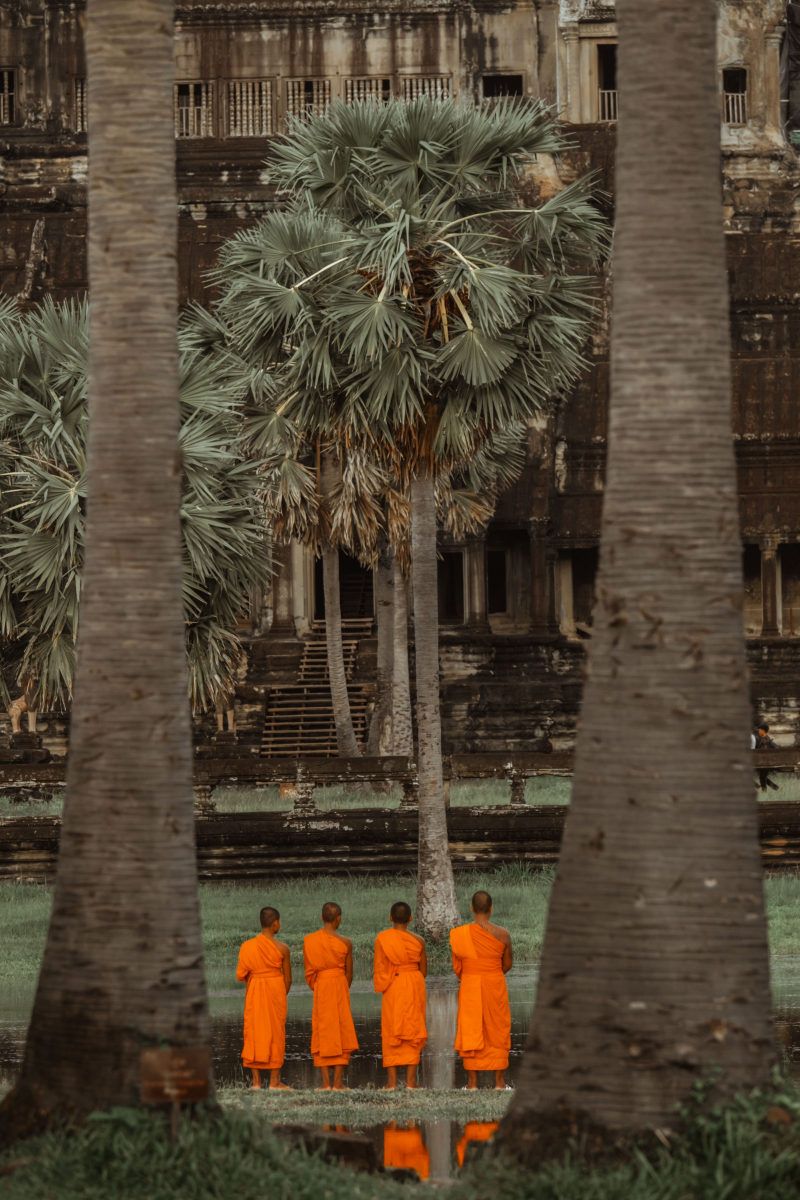
Photo by KIMCHHEN LACH: https://www.pexels.com/vi-vn/anh/nha-s-angkorwat-v-i-cay-c-19217340/ 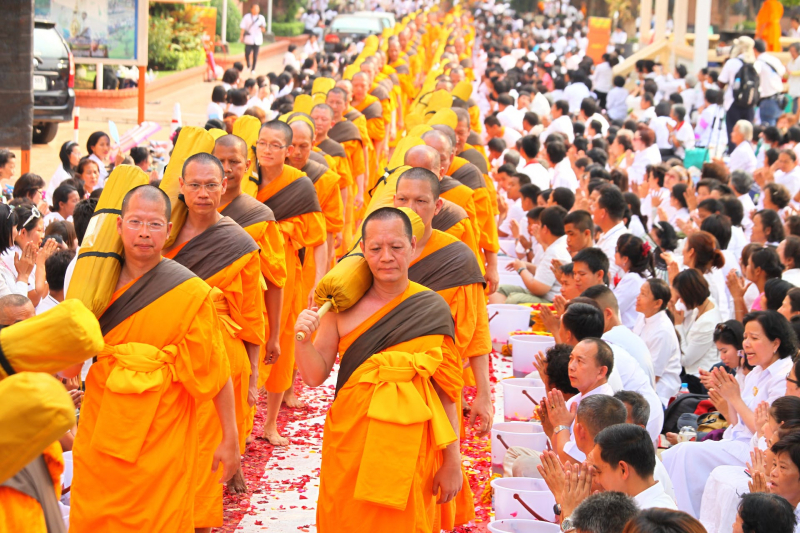
Photo by Pixabay: https://www.pexels.com/vi-vn/anh/m-i-ng-i-t-t-p-ben-ngoai-260898/ -
Sakya Monastery stands as a testament to the rich spiritual and cultural heritage of Tibet. This monastery is a treasure trove of history, art, and religious devotion. Sakya Monastery has played a crucial role in shaping the religious and cultural landscape of Tibet. The monastery's architecture is a captivating blend of Tibetan and Mongolian styles.
Sakya Monastery is renowned for its distinctive gray and white façade. This temple is a departure from the traditional red and white seen in other Tibetan monasteries. Sakya Monastery is divided into three main parts, each holding its unique significance. The library contains an extensive collection of Buddhist scriptures, ancient manuscripts, and thangkas that offer insights into the depth of Tibetan Buddhist philosophy.
The main assembly hall is adorned with intricate murals depicting religious stories and the lives of revered lamas. Sakya Monastery is the seat of the Sakya tradition, one of the four major schools of Tibetan Buddhism. The distinctive teachings and practices of the Sakya lineage, are characterized by a focus on esoteric rituals and advanced meditative techniques. This temple has attracted practitioners and scholars from far and wide.
Sakya Monastery comes alive during various Tibetan festivals, with the most significant being the Sakya Pandita Festival. Celebrated annually, this festival honors the great Sakya Pandita Kunga Gyaltsen, a scholar and statesman from the Sakya lineage. Pilgrims and devotees gather to participate in religious ceremonies, prayers, and traditional dances.
Phone: +86 892 824 2181
Address: Sa'gya, Xigazê, Tibet, China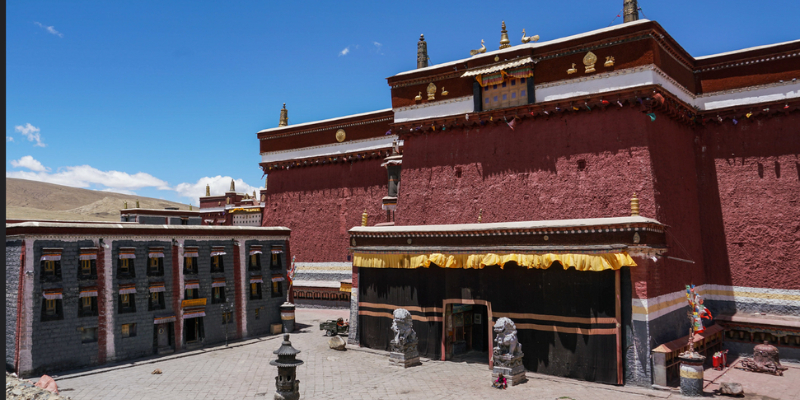
Photo on Flickr: https://www.flickr.com/photos/154696116@N03/43516557900/ 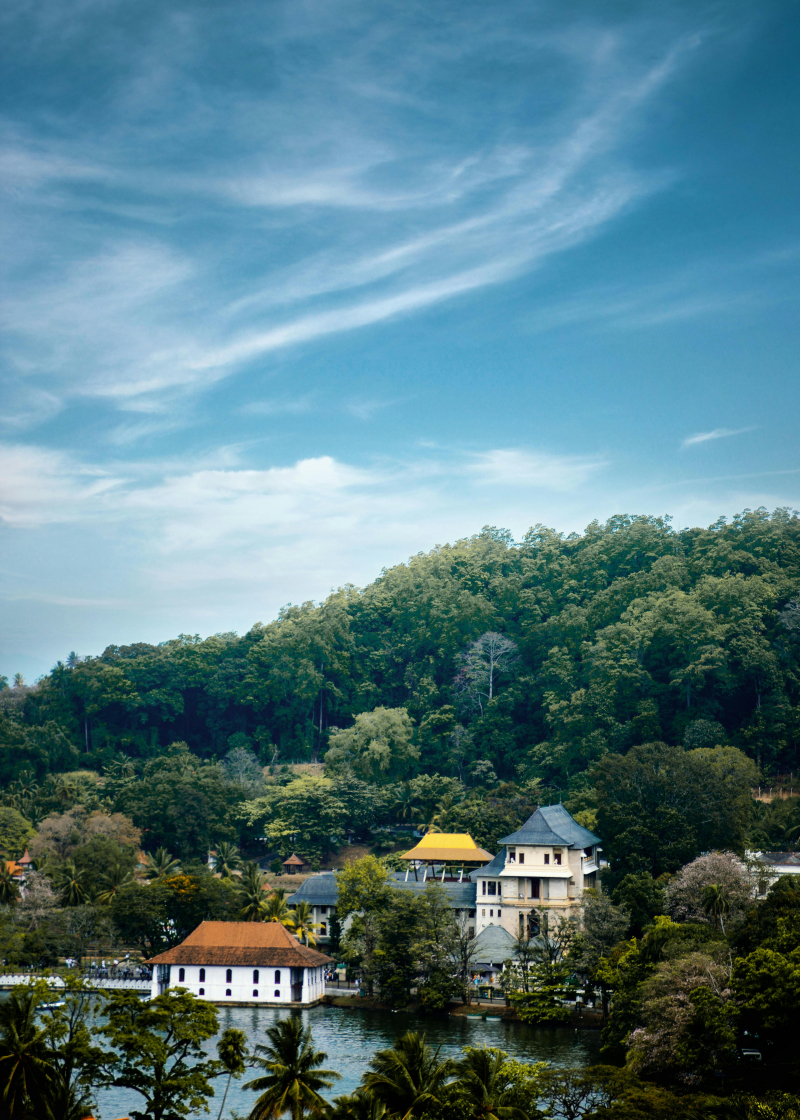
Photo by Kanishka Ranasinghe: https://www.pexels.com/vi-vn/anh/toa-nha-be-tong-mau-tr-ng-va-nau-d-c-bao-quanh-b-i-cay-xanh-d-i-b-u-tr-i-xanh-4169732/ -
Ramoche Monastery stands as a testament to the rich spiritual tapestry that weaves through the landscapes of this ancient land. While perhaps overshadowed by its more famous neighbor, the Jokhang Temple, Ramoche Monastery is a jewel of Tibetan Buddhism, resonating with history, art, and profound spiritual significance.
The architectural design of Ramoche Monastery reflects the artistic sensibilities of Tibetan craftsmanship. The monastery emanates a sense of purity and divinity. The main hall serves as a sanctuary for both monks and pilgrims alike. The highlight of Ramoche Monastery is the Jowo Rinpoche statue, an object of veneration for centuries.
Ramoche Monastery is a repository of Tibetan culture and history. The monastery has weathered the storms of time, surviving periods of political upheaval and cultural change. Today, it stands as a symbol of resilience and continuity, echoing the enduring spirit of Tibetan Buddhism.
Ramoche Monastery remains an active center for spiritual practices. Monks engage in daily rituals, prayers, and ceremonies within the hallowed halls of the monastery. The rhythmic sound of chanting, the fragrance of burning incense, and the glow of butter lamps create an ambiance that invites visitors to partake in the spiritual heartbeat of the monastery.
The annual calendar at Ramoche Monastery is marked by various Tibetan festivals and celebrations. During Losar, the Tibetan New Year, the monastery comes alive with vibrant colors, traditional dances, and elaborate rituals. Pilgrims and locals gather to pay homage and seek blessings for the coming year.
Phone: +86 288 175 4631
Address: No. 41, Ramoche Temple Road, Chengguan District, Lhasa, Tibet, China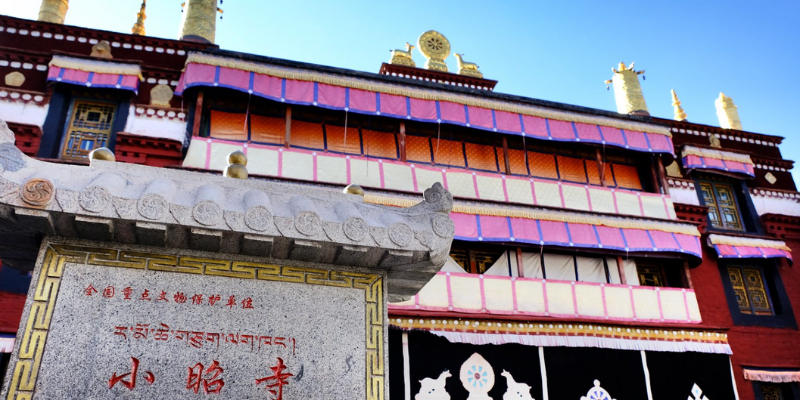
Photo on Flickr: https://www.flickr.com/photos/beckyrong/41644913381/ 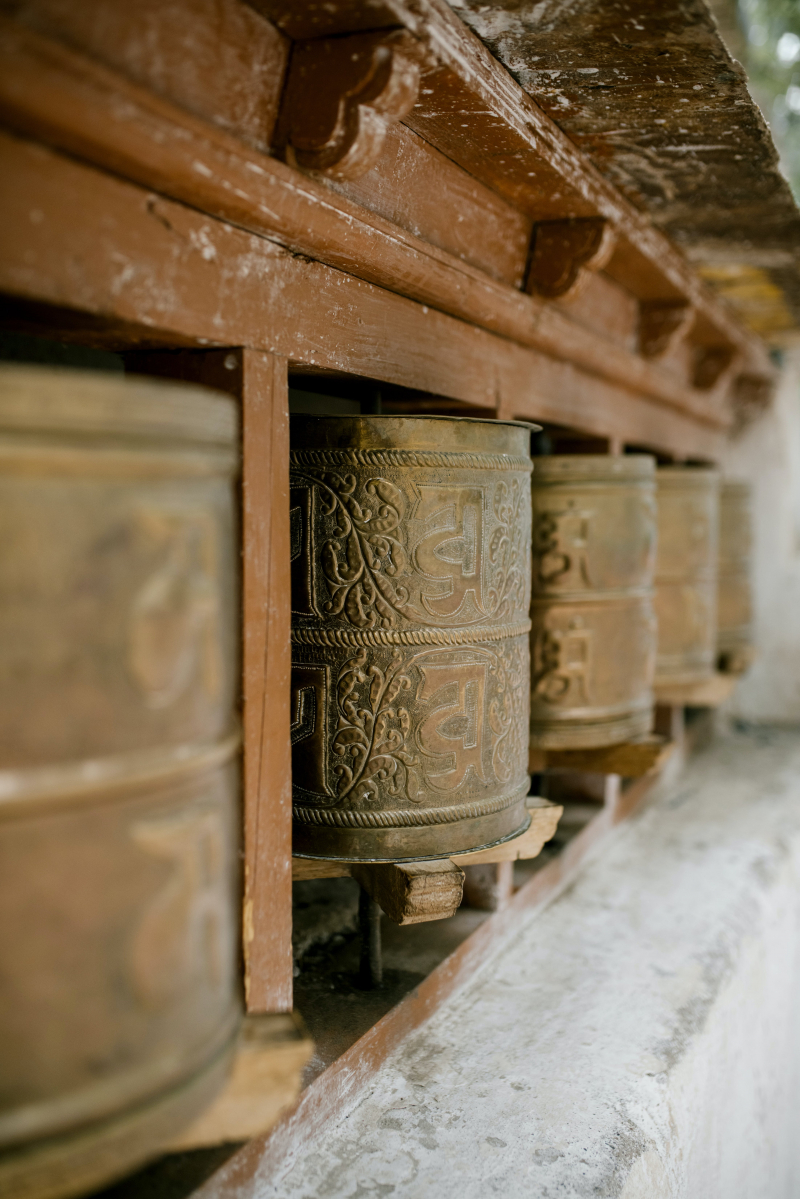
Photo by Julia Volk: https://www.pexels.com/vi-vn/anh/banh-xe-c-u-nguy-n-cu-v-i-v-t-trang-tri-trong-chua-ph-t-giao-5202289/









